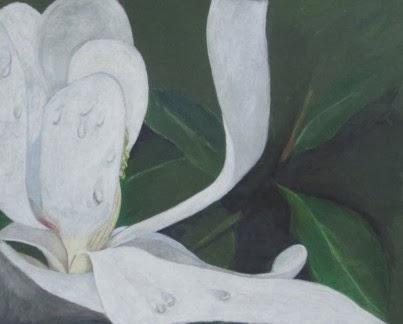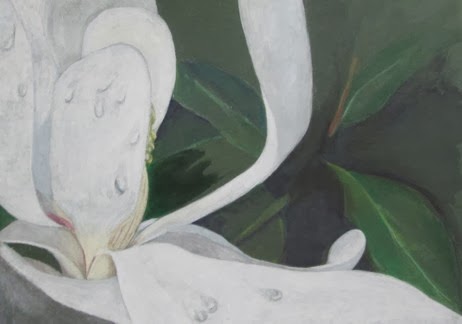 |
| Finished background |
While the background is not the focus of the drawing, it still requires strong attention.
We want the background to compliment and support the focus, not leave it hanging.
There are many ways to approach this.
You and simply have a mottled background, like the fuzzy blobs of color you get in a photograph, or you can put in enough details to suggest focus. What you do is up to you, but consider the response you want.
Many times I have heard artists and students say "its that way in the photo".
So?
Are you the photographer?
Are you simply copying the photo or creating a work of art?
Because of the shallow depth of field in the photograph (we will not go into that here,) most likely there is no detail available for the background.
If you have taken the photos yourself, you might start taking more than one photo, one focused on the object, one on the foreground and one on the background. If you have not done this, it is still up to you to supply the background.
Hint: it does not have to match the photo!
With the second magnolia I decided to take a different approach to the background.
 |
| watering the background |
With the first, I simply put in some shading to suggest leaves. Highlighted a few and left the rest to the viewer to supply. In fact, this happens. A couple of good leaves and a few dark shadows and people "see" the background leaves.
This time I wanted to suggest the leaves, but also to trigger a more painterly feel to the colored pencil painting. To this end, I used watercolor pencils, simply putting in blocks of color and using water and a brush to create the background.
As you can see, there really isn't much to the background. A few leaves, a suggestion of shape and highlights. Contrast does the rest.













